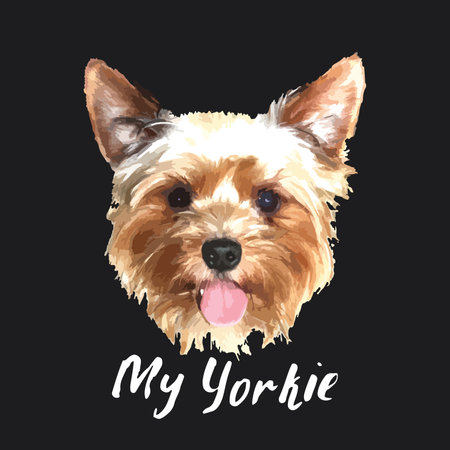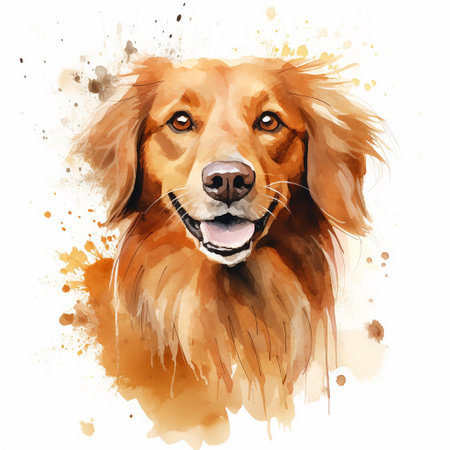Using the Wrong Grooming Tools
For many British dog owners keen to keep their pups looking neat between professional grooms, the first hurdle often lies in tool selection. It’s surprisingly common to grab whatever brush or comb is lying around, but not all coats are created equal. For instance, using a standard slicker brush on a double-coated breed like a Border Collie or Golden Retriever can lead to missed undercoat matting, while a bristle brush does little for wiry terrier fur. Another classic blunder is reaching for those bargain Poundland scissors—tempting as they are for a quick fringe trim, they’re notorious for uneven cuts and even accidental nicks. Investing in breed-appropriate grooming tools and steering clear of makeshift solutions ensures your canine companion stays comfortable and their coat healthy. Remember: a little research goes a long way toward avoiding these all-too-common British grooming faux pas.
Bathing Too Frequently or Rarely
When it comes to keeping your pup prim and proper, finding the right bathing rhythm is a classic British balancing act. On one hand, you’ve got the notorious “soggy spaniel syndrome”—that unmistakable, over-washed look complete with limp fur and lost natural oils. On the other, there’s the time-honoured tradition of letting your pooch embrace their inner mud-lover, especially after a romp across a rain-soaked Hampstead Heath or through puddles in the Lake District. But how often should you really bathe your dog, especially when the UK weather swings from drizzle to downpour?
The British Weather Factor
Our unpredictable climate means muddy paws are almost inevitable. Yet, frequent baths can strip away essential oils, leading to dry skin and a lacklustre coat. Conversely, too few washes can result in lingering odours and a not-so-cosy snuggle buddy on the sofa.
Finding the Sweet Spot
| Coat Type | Recommended Bathing Frequency | UK Weather Tip |
|---|---|---|
| Short & Smooth (e.g. Staffies) | Every 2-3 months | Wipe down with a damp flannel after muddy walks |
| Medium & Double-Coated (e.g. Labradors) | Every 6-8 weeks | Brush out dried mud before bathing |
| Long & Silky (e.g. Spaniels, Setters) | Monthly or as needed | Towel off immediately after rainy walks to prevent matting |
| Corded or Curly (e.g. Poodles, Doodles) | Every 4-6 weeks | Rinse paws after each walk in winter to avoid grit build-up |
Paw-fect Tips for British Dog Owners:
- Mud management: Invest in an absorbent dog towel and keep it by the door for quick wipe-downs after wet walks.
- Avoid overwashing: Use a gentle, dog-specific shampoo only when necessary—human products can disrupt their skin’s natural balance.
- Seasonal adjustments: In wetter months, consider more frequent rinses of paws and undercarriage rather than full baths.
- Nose test: If your dog smells fresh and their coat feels clean, hold off on another bath!
By steering clear of both extremes—overbathing and neglect—you’ll help your four-legged friend stay healthy, happy, and ready for whatever the great British outdoors throws their way.

3. Neglecting Ear and Paw Care
If you’re a British dog owner, you’ll know that the UK’s unpredictable weather and love for countryside rambles or urban strolls mean our canine companions’ paws and ears are often exposed to mud, moisture, and hidden hazards. Whether you’re exploring the Lake District’s soggy fells or wandering through rainy London parks, it’s all too easy to overlook these crucial grooming areas.
Muddy Paws: After a classic British walk—be it across a field or along cobbled streets—your dog’s paws can trap dirt, grit, and even harmful substances like road salt or pesticides. If left uncleaned, this grime can lead to irritation, cracked pads, or infections.
Floppy Ears at Risk: British breeds with luscious floppy ears, like Cockapoos or Spaniels, are especially prone to ear troubles. The damp climate creates a breeding ground for bacteria and yeast inside those adorable folds. Forgetting regular checks and gentle cleaning can result in unpleasant odours or painful ear infections that require a costly vet visit.
Top Tip: Make post-walk paw and ear checks part of your routine. Use a soft cloth to wipe away mud from paws (don’t forget between the toes!) and gently inspect ears for signs of redness or debris. For extra muddy adventures, consider a quick rinse with lukewarm water and always dry thoroughly to avoid lingering dampness.
Treating paw and ear care as essential parts of your at-home grooming regime ensures your four-legged friend stays happy, healthy, and ready for their next Great British adventure.
4. Skipping Regular Nail Trims
It’s all too common to hear the familiar “click-clack” of dog nails tapping across British wooden floors—a sure sign those nails are overdue for a trim. Many UK pet owners underestimate just how quickly a dogs claws can grow, especially with our love for park strolls rather than rugged countryside rambles that naturally wear down nails. Overgrown nails not only cause discomfort but may also lead to splayed feet or joint issues in the long run.
Why Do British Dogs Often Have Long Nails?
In the UK, the popularity of soft-surfaced parks and indoor living means dogs aren’t always wearing their nails down as nature intended. Rainy days and shorter walks often mean less contact with rough surfaces, so regular trimming becomes essential for paw health and home harmony.
Tips for Safe At-Home Nail Maintenance
| Step | What to Do | British Tip |
|---|---|---|
| Check Weekly | Assess your dog’s nails every week, especially after muddy park runs. | Aim for nails just above the floor when standing—no tap-dancing on your laminate! |
| Use Proper Tools | Invest in a quality pair of clippers or a grinder suitable for your breed’s nail thickness. | Many local pet shops or vets offer recommendations tailored to British breeds. |
| Know the Quick | Avoid cutting into the sensitive quick by trimming little and often. | If in doubt, consult your local groomer—many offer quick lessons over a cuppa. |
| Paw Handling Practice | Get your dog used to having their paws handled from puppyhood onwards. | Pair trims with gentle praise and perhaps a bit of cheese as a treat—very British! |
Avoiding the Mistake: Little and Often is Key
Nail trims don’t need to be stressful or reserved for professional groomers. With patience and positive reinforcement, most British dogs can learn to tolerate—and even enjoy—a routine paw pamper at home. Remember, frequent checks and minor trims are much safer (and quieter) than waiting until you hear that unmistakable “click-clack” echoing through your lounge.
5. Overlooking Breed-Specific Grooming Needs
It’s all too easy to assume that what works for one dog will work for another, but this approach can spell trouble when grooming your beloved British canine at home. Each breed in the UK comes with its own unique coat type and grooming requirements, and overlooking these can lead to discomfort or even health issues for your furry friend. Take the ever-popular Cockapoo, for example; their signature curls require regular brushing and specialised detangling to prevent painful matting, a stark contrast to the short, dense coat of a classic Labrador Retriever, which needs more focus on shedding control and less on knot management. If you treat every dog like a Labrador, those lovely Cockapoo curls could end up in a right tangle! Similarly, breeds such as the West Highland Terrier demand attention to specific areas prone to oil build-up, while Spaniels often need careful trimming around their ears and paws. By taking the time to understand your dog’s breed-specific grooming needs—whether you’ve got a stately English Bulldog or a lively Border Collie—you’ll help ensure they’re comfortable, healthy and looking tip-top. Don’t be shy about consulting your local groomer or breed club for tailored advice; after all, we Brits know there’s nothing quite like a well-groomed pooch strutting down the high street!
6. Stressful Grooming Environments
One of the most overlooked mistakes when grooming your dog at home is not considering the environment where you carry out the routine. Many British households are bustling with daily activity—between the telly blaring in the background, post arriving unexpectedly, and family members popping in and out, it’s easy for your pup to feel overwhelmed. To foster a positive grooming routine, it’s vital to create a calm and distraction-free space. Choose a quiet room away from busy hallways, turn off the TV and radio, and let your household know you need a bit of peace for your grooming session. Consider using a non-slip mat on the floor or table to help your dog feel secure. If your pet seems anxious, try playing gentle classical music or use calming sprays designed for dogs. Keeping grooming sessions short but consistent will help build trust over time. By making grooming a relaxing experience rather than a stressful chore, you’ll not only improve your dog’s coat but also strengthen the bond between you and your furry friend.


